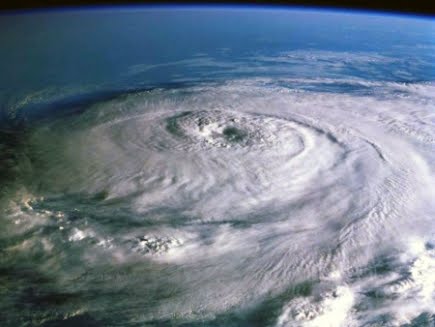With Hurricane Earl on its way, I thought that this press release from the Small Business Administration was particularly timely and relevant:
SBA Encourages the Public to Plan for Disasters During National Preparedness Month
In conjunction with the five-year anniversary of the devastating Gulf Coast storms of 2005, the U.S. Small Business Administration is encouraging business owners, homeowners and others to create their own disaster preparedness plan during National Preparedness Month in September.
 “There is a tendency to think that a large-scale disaster is not going to happen ‘where I live,’” SBA Administrator Karen Mills said. “The reality is that storms, floods, earthquakes, fires and man-made disasters can strike anytime and anywhere. Planning ahead for your own post-disaster recovery is a good step toward protecting your family, your business and your community.”
“There is a tendency to think that a large-scale disaster is not going to happen ‘where I live,’” SBA Administrator Karen Mills said. “The reality is that storms, floods, earthquakes, fires and man-made disasters can strike anytime and anywhere. Planning ahead for your own post-disaster recovery is a good step toward protecting your family, your business and your community.”
SBA, along with many state, local government and private sector coalition partners are participating in this September’s National Preparedness Month.
To prepare for disasters, SBA offers the following tips:
·Develop a solid emergency response plan. Find evacuation routes from the home or business and establish meeting places. Make sure everyone understands the plan beforehand. Keep emergency phone numbers handy. Business owners should designate a contact person to communicate with other employees, customers and vendors. Homeowners, renters and business owners should ask an out-of-state friend, colleague or family member to be a “post-disaster” point of contact, supporting the flow of information about short-term relocations, recovery, additional sources of assistance, etc.
·Make sure you have adequate insurance coverage. Disaster preparedness begins with having adequate insurance coverage—at least enough to rebuild your home or business. Homeowners and business owners should review their policies to see what is or isn’t covered. Companies should consider business interruption insurance, which helps cover operating costs during the post-disaster shutdown period. Flood insurance is essential. To find out more about the National Flood Insurance Program, visit the Web site at www.floodsmart.gov.
·Copy important records. It’s a good idea to back up vital records and information saved on computer hard drives, and store that information at a distant offsite location in fireproof safe deposit boxes. You should have copies/back ups of important documents ready to take with you if you have to evacuate.
·Create a “Disaster Survival Kit.” The kit should include a flashlight, a portable radio, extra batteries, first-aid supplies, non-perishable food, bottled water, a basic tool kit, plastic sheeting and garbage bags, cash, and a digital camera to take pictures of the property damage after the storm.
More preparedness tips for businesses, homeowners and renters are available on the SBA’s website at www.sba.gov.
The Institute for Business and Home Safety (www.disastersafety.org ) also has information on protecting your home or business. Additional information on developing an emergency plan is available at the federal government’s preparedness website www.ready.gov.
When disaster strikes, the SBA makes low-interest loans to homeowners, renters and non-farm businesses of all sizes. Homeowners may borrow up to $200,000 to repair or replace damaged real estate. Individuals may borrow up to $40,000 to cover losses to personal property.
Non-farm businesses and non-profit organizations of any size may apply for up to $2 million to repair or replace disaster damaged business assets and real property. Small businesses that suffered economic losses as a direct result of the declared disaster may apply for a working capital loan up to $2 million, even if the property was not physically damaged.
To learn more about the SBA’s disaster assistance program, visit the website at www.sba.gov/disasterassistance.










 In addition, a 2007 survey of small business owners by the Red Cross and FedEx showed that while 94 percent of small business owners believed there was a potential for disaster to seriously disrupt their business, less than half felt prepared for even a one-week disruption.
In addition, a 2007 survey of small business owners by the Red Cross and FedEx showed that while 94 percent of small business owners believed there was a potential for disaster to seriously disrupt their business, less than half felt prepared for even a one-week disruption.